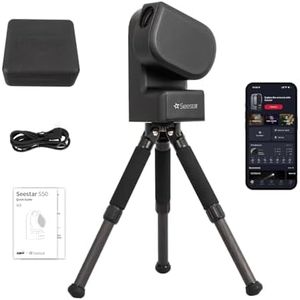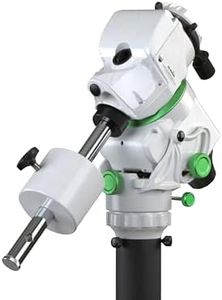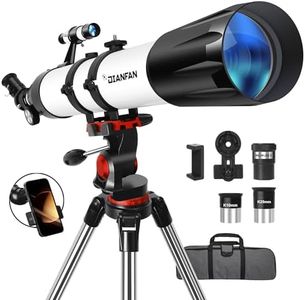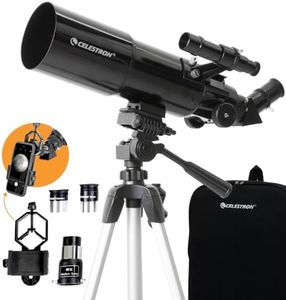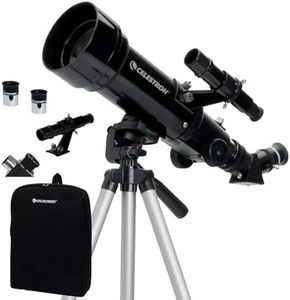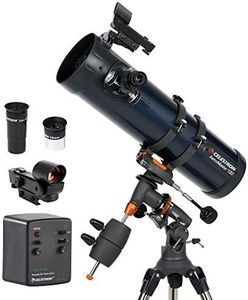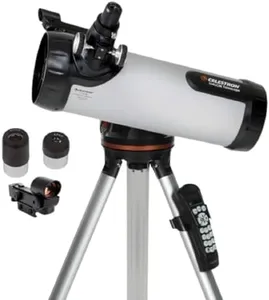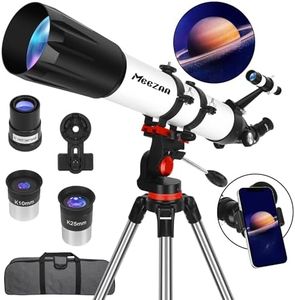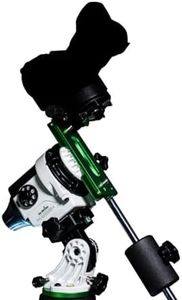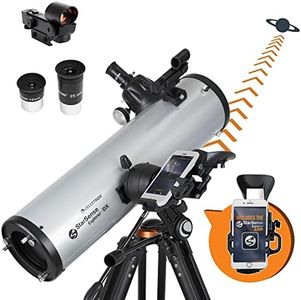We Use CookiesWe use cookies to enhance the security, performance,
functionality and for analytical and promotional activities. By continuing to browse this site you
are agreeing to our privacy policy
10 Best Telescopes
From leading brands and best sellers available on the web.By clicking on a link to a third party's website, log data is shared with that third party.
Buying Guide for the Best Telescopes
Choosing a telescope can feel overwhelming, but understanding a few key specifications will make the process much easier. The right telescope for you depends on what you want to observe, how much portability you need, and where you plan to use it. Whether you’re interested in gazing at the moon, planets, or distant galaxies, focusing on essential specs will help you find a telescope that’s both enjoyable and easy to use.ApertureAperture refers to the diameter of the telescope’s main lens or mirror—the part that gathers light. This is the most important specification because it influences how much detail you can see. Larger apertures gather more light, leading to brighter and clearer images, especially of faint objects like galaxies or nebulae. Small apertures (up to about 70mm for refractors, 114mm for reflectors) are best for casual viewing of the moon and brighter planets. Medium apertures (around 80-130mm for refractors, 130-200mm for reflectors) strike a good balance and allow you to see more detail both on planets and some deep-sky objects. Larger apertures (over 200mm for reflectors) show even fainter and more detailed views but are bigger and less portable. Choose based on whether you prioritize portability or want to observe fainter, deep-sky objects.
Focal LengthFocal length is the distance light travels inside the telescope from the lens or mirror to the eyepiece. It mainly affects the magnification and field of view. Short focal lengths (under 600mm) give you a wide, bright view—great for star clusters and sweeping the Milky Way. Long focal lengths (over 1000mm) offer higher magnification, helping you see planets and the moon in greater detail, but with a narrower view. If you love looking at planets and want more detail, a longer focal length is useful; if you prefer observing large patches of sky and deep-sky objects, a shorter focal length works better.
Mount TypeThe mount is the support that holds the telescope and lets you move it to aim at different parts of the sky. The two main types are alt-azimuth (simple up-down, left-right movement) and equatorial (tracks the motion of the stars as the Earth rotates). Alt-azimuth mounts are user-friendly, lightweight, and best for general casual viewing. Equatorial mounts require more setup but make it easier to follow objects as they move across the night sky, especially useful for astronomy enthusiasts planning longer viewing sessions or getting into astrophotography. Think about your patience for setup and how you plan to use your telescope when choosing a mount.
PortabilityPortability considers how easy it is to move and set up your telescope. Small, lightweight telescopes are very portable and great if you want to take your telescope camping or to darker skies away from city lights. Larger telescopes can be heavy and cumbersome, usually best if you plan to keep them in one place, like a backyard. Consider how much weight you’re comfortable carrying and how far you’ll need to transport the telescope.
EyepiecesEyepieces are the parts you look through, and they determine the magnification of the telescope. Many telescopes come with one or two eyepieces with different focal lengths. Short focal length eyepieces give higher magnification, good for viewing planets and the moon, while longer focal length eyepieces give lower magnification and wider fields, which are better for scanning star fields or large objects. Having a set of varied eyepieces adds flexibility to your observing. Consider your observing targets: more eyepieces allow greater versatility, but beginners can start with just one or two.
Finder ScopeA finder scope is a small telescope mounted alongside the main one, designed to help you aim the main telescope at objects in the sky. There are two main styles: optical finders, which are like tiny telescopes, and red-dot finders, which use a projected dot or reticle. A good finder makes locating objects much easier, especially for beginners. For basic use and bright objects, a simple red-dot finder is usually enough; for fainter objects, optical finders with a little magnification can be helpful.
